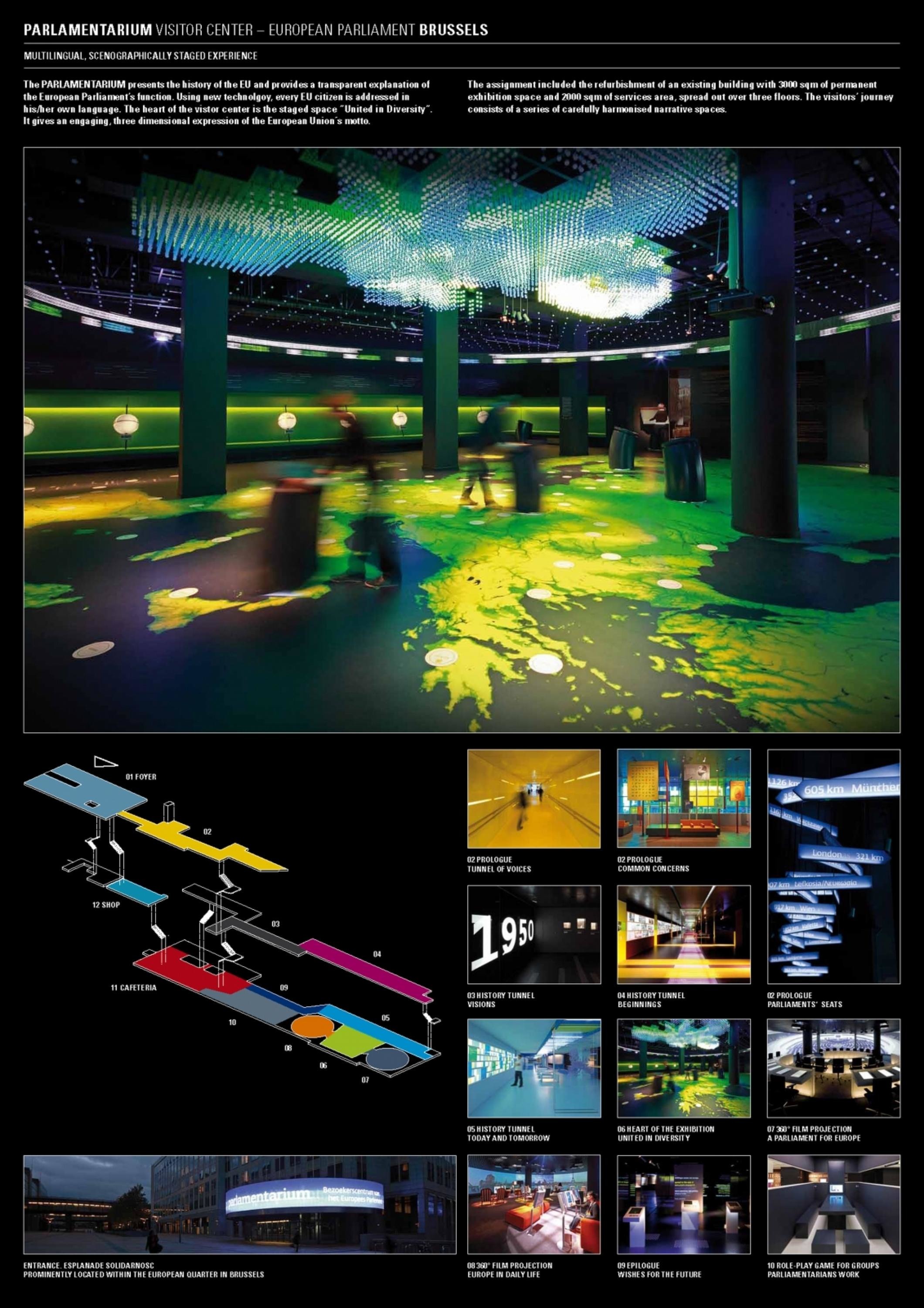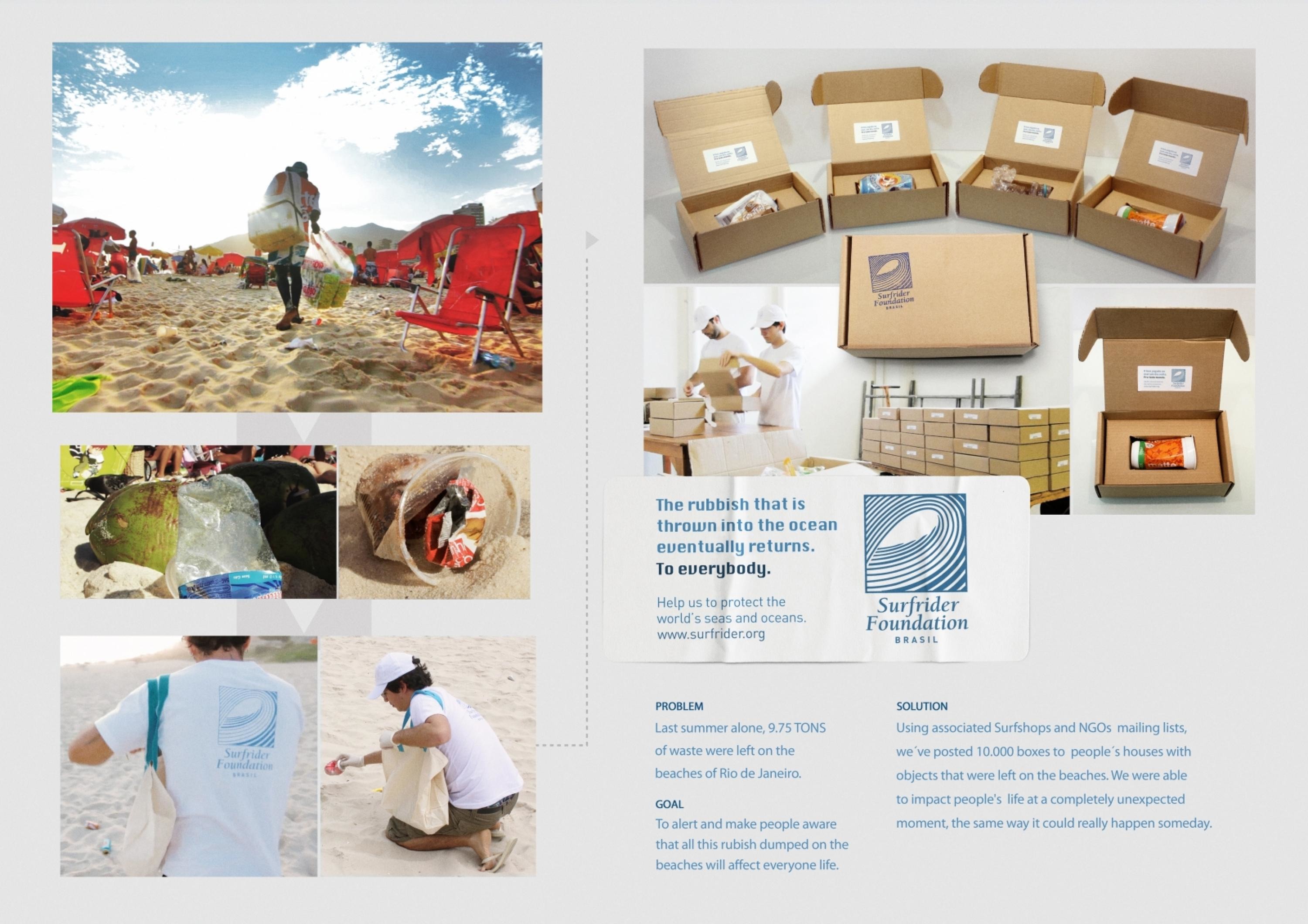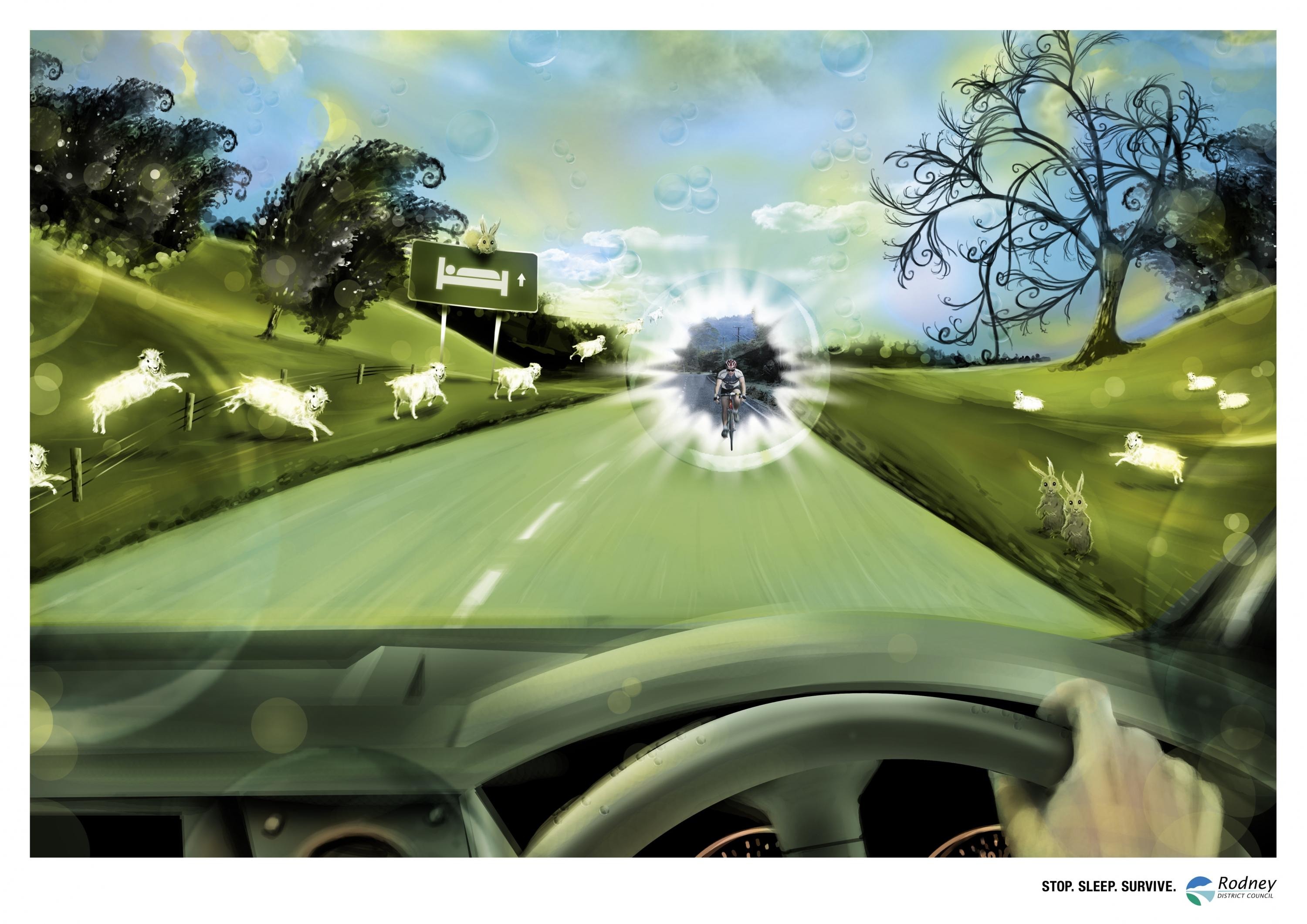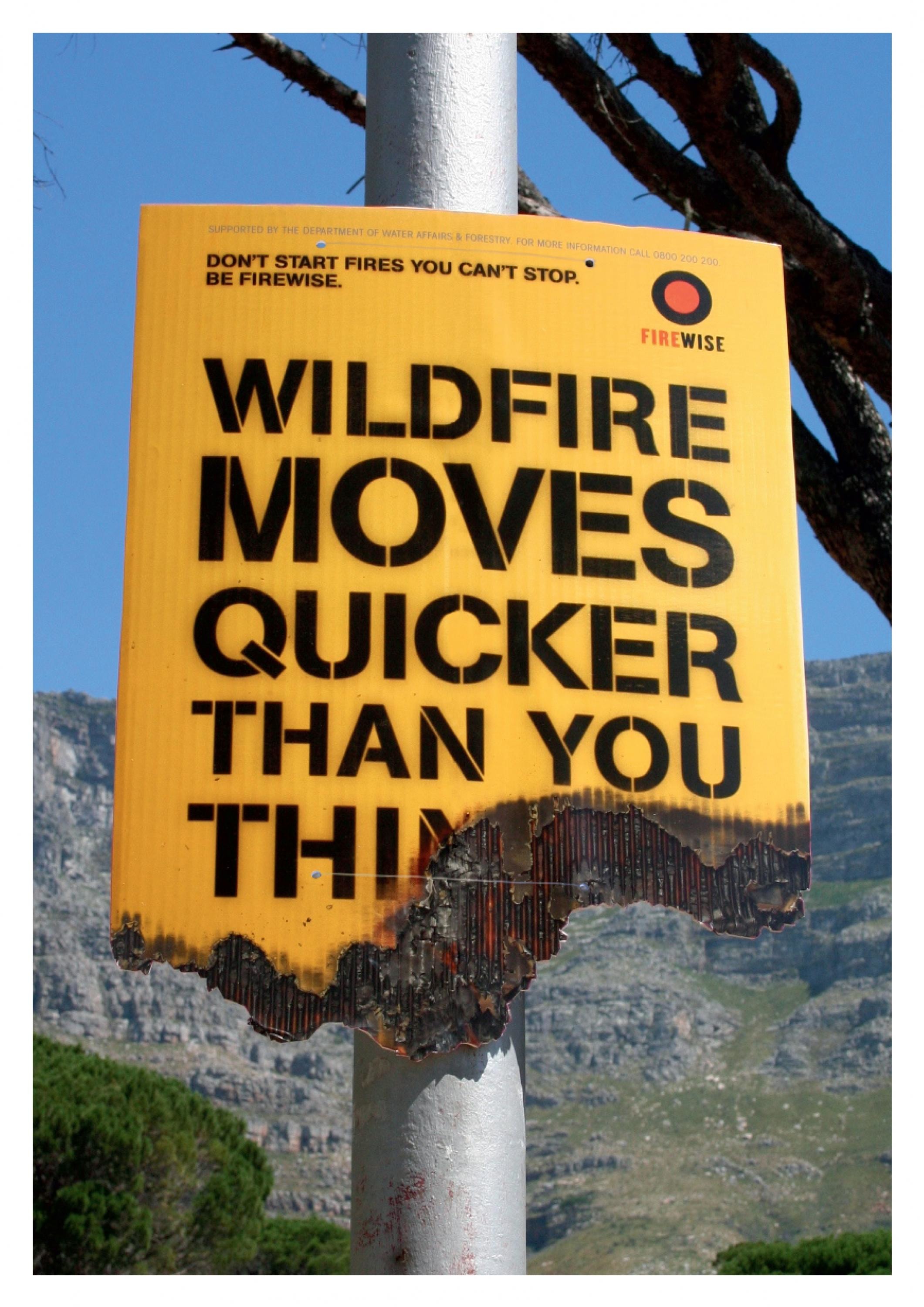Eurobest
Choose Your Future
&CO, Copenhagen / EUROPEAN PARLIAMENT / 2019
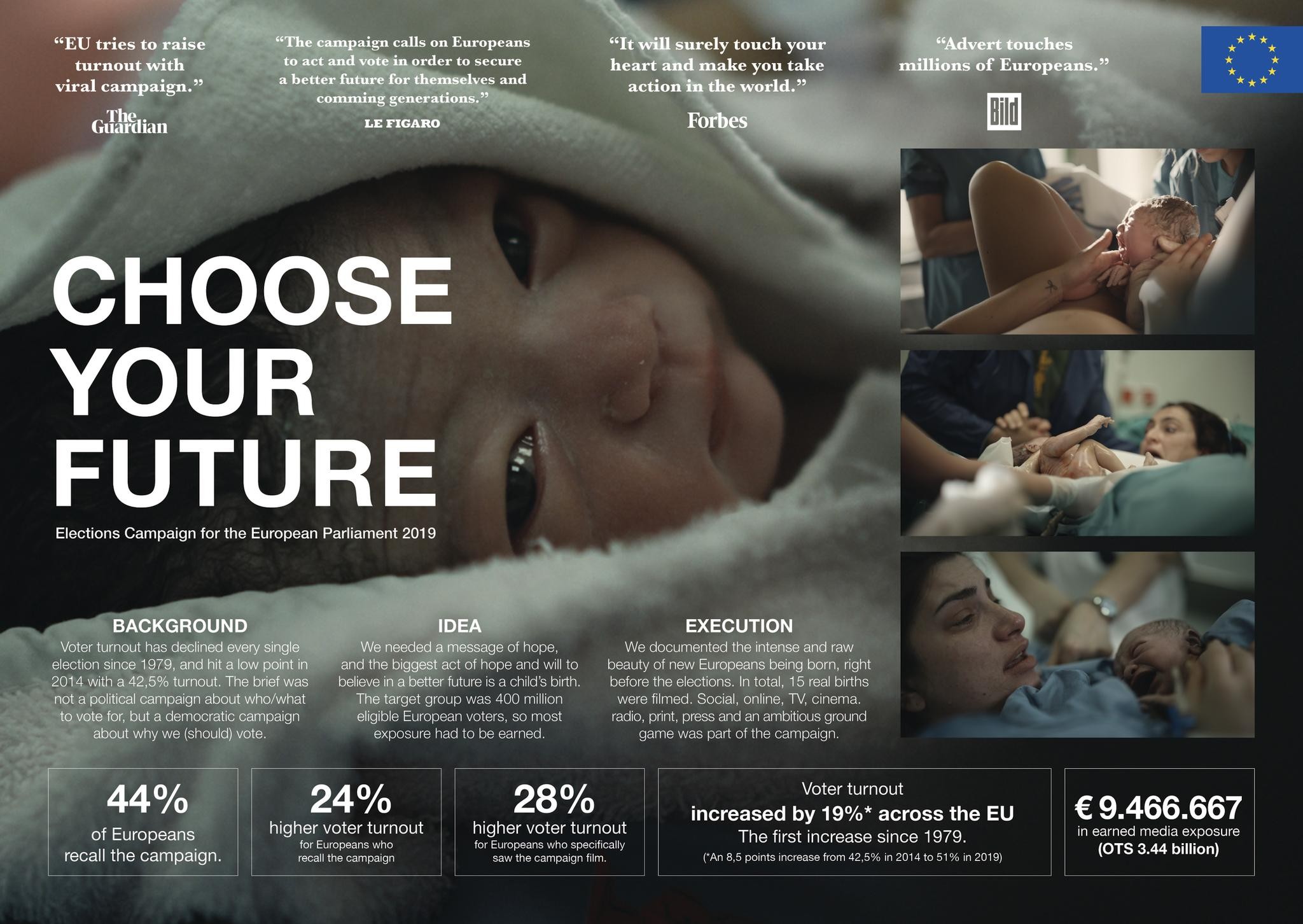
Overview
Entries
Credits
OVERVIEW
Background
Situation: Voter turnout had been declining since the very first European Elections in 1979 and hit a low point in 2014 with only 42,5 % showing up to vote.
Brief: The role of this campaign was to make Europeans stand together and vote in the 2019 European Elections. With Brexit, the rise of fake news, populism, and nationalism, the European project felt fragile in the time leading up to the elections. Commissioned by the Parliament the brief was not to create a political campaign about who and what to vote for, but a democratic campaign about why we (should) vote.
Objectives: Engage Europeans in the 2019 European Elections. The ambition was a 360º campaign with TV, social media and press, but taking the huge and diverse target group of 400 million eligible European voters into consideration, the means were limited. Most of the exposure had to be earned.
Idea
From the second we come into this world, we’re in it together.
Democracy should unite us, but politics often divide us. We tend to forget all the things we have in common.
We needed a message of hope, and the biggest act of hope and will to believe in a better future is a child’s birth. So, we filmed the intense and raw beauty of new Europeans being born, across Europe, right before the elections. In total, 15 real births were filmed across four European countries.
In a world where public breastfeeding is still an issue sometimes, live births in an official EU film is a big statement.
The campaign consisted of radio, print, outdoor, press etc. But the main content was a long-format online-film, and with a huge and diverse target group of 400 million eligible European voters, the film had to be impactful. Exposure had to be earned.
Strategy
A survey on Europeans’ attitude towards Europe and likelihood to vote was carried out across member states to support the emotional campaign film with facts relevant for European media and citizens.
The survey revealed that 80% of Europeans believe that what unites Europe is more important than what separates us. But it also showed fear of global issues and uncertainty about the future.
The strategy was to give a positive perspective for the future, even with the huge challenges we face globally, because the European Union is our hope for tackling these problems together.
The survey also identified younger people as the most positive towards the EU, but the least likely to vote. That gap created the tension in the press release needed to peak interest from the media outlets of Europe.
Execution
Leading up to the 2019 elections, paid, owned and earned media amplified each other. With a target group of 400 million eligible voters it was vital to combine Television, Cinema, Print, press, and social media.
An ambitious ground game with thousands of partners and volunteers were orchestrated to support the campaign across Europe.
Within a matter of weeks, the campaign film generated more than 135 million views on social media alone and 600.000 interactions (shares, comments, likes). 1200 cinemas contributed and showed the film. 84 national tv-channels aired a tv-version more than 2500 times altogether (plus the coverage by regional channels). The biggest medias in Europe did editorial coverage on the campaign (Forbes, Guardian, Spiegel, Le Figaro, Bild, Politico, Le Monde and many, many more), and it became the object of news and panel discussions on many of Europe’s biggest tv-channels.
Outcome
The campaign earned €9.466.667 in media exposure (OTS 3.44 billion)
44% of Europeans recall the campaign, and 27% specifically saw the campaign film prior to voting.
And while voter turnout never comes down to one or even a few deciding factors, the campaign messages had a clear impact on voter turnout.
Europeans who recall the campaign had a 24% higher voting turnout.
Europeans who specifically saw the campaign film prior to voting had a 28% higher voting turnout.
And the overall voting turnout in the European Elections increased for the first time since the very first elections in 1979.
Voter turnout increased by 19% to a 20-year high. (An 8,5 points increase from 42,5% in 2014 to 51% in 2019).
Similar Campaigns
11 items

